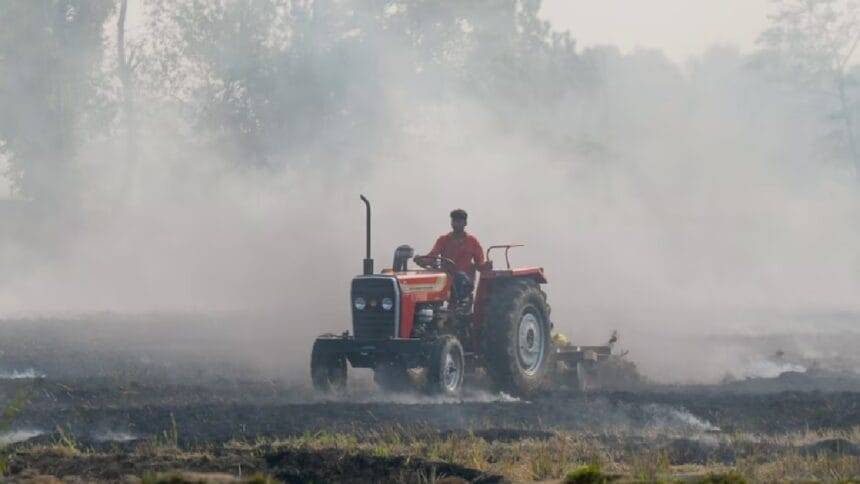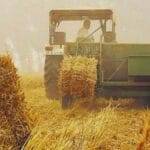Main Points In Hindi (मुख्य बातें – हिंदी में)
यहाँ पर
के मुख्य बिंदुओं को हिंदी में प्रस्तुत किया गया है:
-
कृषि आग के डेटा में असमानता: पंजाब में रिमोट सेंसिंग तकनीक से संकलित फसल जलाने की घटनाओं और भौतिक सत्यापन के डेटा के बीच 45 प्रतिशत का बड़ा अंतर देखा गया है, जिससे CAQM की चिंताएँ बढ़ गई हैं।
-
संवेदन केंद्र की रिपोर्ट: पंजाब रिमोट सेंसिंग सेंटर के अनुसार, 10 नवंबर तक कुल 6,611 फसल जलाने की घटनाएँ रिपोर्ट की गईं, जबकि भौतिक सत्यापन में 2,983 स्थानों पर कोई घटना नहीं देखी गई।
-
CAQM की समीक्षा बैठक: इस मुद्दे पर CAQM की बैठक में चर्चा की जाएगी, जिसमें आयोग के अध्यक्ष और राज्य सरकार के वरिष्ठ अधिकारी शामिल होंगे।
-
स्थानीय स्तर पर जांच: सभी पंजाब के जिला उपायुक्तों को निर्देश दिए गए हैं कि वे उन स्थानों का व्यक्तिगत रूप से निरीक्षण करें जहाँ कोई फसल जलाना नहीं पाया गया।
- नया मापदंड: अब फसल जलाने की घटनाओं को केवल तभी मान्यता दी जाएगी जब रिमोट सेंसिंग और भौतिक सत्यापन डेटा मेल खाएँगे, और दोनों रिकॉर्ड एकत्रित किए जाएँगे।
Main Points In English(मुख्य बातें – अंग्रेज़ी में)
-
Discrepancy in Data: There is a significant disparity between stubble fire incidents reported by remote sensing technology and those confirmed through physical verification in Punjab, with differences noted up to 45%. For example, 6,611 incidents were detected via satellite, but no burning was found in 2,983 physical inspections.
-
Concerns of CAQM: The Commission for Air Quality Management (CAQM) is increasingly concerned about this discrepancy and is investigating the reasons behind the large differences between the data sources.
-
Upcoming CAQM Meeting: A review meeting is scheduled for Wednesday to address the issue, where CAQM officials will discuss the findings with senior state government representatives and deputy commissioners from various districts.
-
Monitoring and Verification Instructions: CAQM teams are monitoring fire incidents across 16 districts in Punjab and 10 in Haryana. Instructions have been issued to Deputy Commissioners to ensure thorough investigations of discrepancies, requiring photographic and GPS evidence to confirm reports of stubble burning.
- Combined Data Requirement: From now on, stubble burning incidents will be acknowledged only when there is a match between satellite imagery and physical verification, along with proper documentation to confirm the findings.
Complete News In Hindi(पूरी खबर – हिंदी में)
पंजाब में, खेती के खेतों में पराली जलाने की घटनाओं के डेटा में काफी अंतर पाया गया है। रिमोट सेंसिंग तकनीक से मिली जानकारी की तुलना में फील्ड में की गई शारीरिक सत्यापन के आंकड़े बहुत कम हैं। इस अंतर को 45 प्रतिशत तक दर्ज किया गया है। इस असंगतता से वायु गुणवत्ता प्रबंधन आयोग, यानी CAQM की चिंताएँ बढ़ गई हैं। CAQM की टीम यह जांच कर रही है कि रिमोट सेंसिंग और फिजिकल वेरिफिकेशन डेटा में इतना बड़ा अंतर क्यों है।
पंजाब रिमोट सेंसिंग सेंटर द्वारा 10 नवंबर तक पराली जलाने के कुल मामलों की संख्या 6,611 बताई गई है, लेकिन फिजिकल वेरिफिकेशन में 2,983 स्थानों पर पराली जलाने की कोई घटना नहीं पाई गई। इसका मतलब है कि सैटेलाइट इमेजरी के माध्यम से रिपोर्ट की गई 45 प्रतिशत घटनाओं में कोई पराली जलाने की घटना नहीं थी।
CAQM बैठक में होगी जांच
इस मुद्दे पर CAQM की समीक्षा बैठक में चर्चा की जाएगी। CAQM के धान स्टॉर प्रबंधन विभाग के प्रमुख, गुरनाम सिंह ने बताया कि आयोग के अध्यक्ष राजेश वर्मा अमृतसर,Barnala, Bathinda, Faridkot, Ferozepur, Fazilka, Ludhiana, Mansa, Moga, Muktsar, Patiala, Sangrur और Tarn Taran के जिले के अधिकारियों के साथ मिलकर इस मामले पर चर्चा करेंगे। इसके अलावा, मध्य प्रदेश के उन जिलों के उप-आयुक्तों से भी बात करेंगे, जहां पराली जलाने की अधिकतम घटनाएं हुई हैं।
CAQM की टीम पंजाब के 16 जिलों और हरियाणा के 10 जिलों में खेतों में आग लगने की घटनाओं पर निगरानी रख रही है। इसके अलावा, जालंधर, फतेहगढ़ साहिब और कपूरथला में भी उप-आयुक्तों, कृषि विभाग के अधिकारियों और प्रदूषण नियंत्रण बोर्ड के सहयोग से घटनाओं की निगरानी की जा रही है। ये टीमें इन जिलों में स्थिति और भविष्य में होने वाली पराली प्रबंधन गतिविधियों की भी जांच कर रही हैं।
इस संदर्भ में पंजाब के सभी उप-आयुक्तों को निर्देश दिए गए हैं कि वे उन सभी घटनाओं की व्यक्तिगत जांच करें जहां कोई फसल जलाने का प्रमाण नहीं मिला। इन स्थानों को “कोई फसल जलाना नहीं पाया गया” माना जाएगा जब उप-आयुक्त की रिपोर्ट फोटो और GPS रिकॉर्ड के साथ होगी। अर्थात्, अब किसी स्थान पर पराली जलाने की घटना तब ही मानी जाएगी जब सैटेलाइट छवि और फिजिकल वेरिफिकेशन डेटा मेल खाता हो और दोनों रिकॉर्ड एक साथ एकत्रित किए जाएं।
इसके अलावा पढ़ें: दिल्ली में पराली जलाने का योगदान कितना है, यह आंकड़ा आपको चौंका देगा, यह कमी कैसे आई।
Complete News In English(पूरी खबर – अंग्रेज़ी में)
In Punjab, a big difference has been found between the data collected through remote sensing technology of stubble fire and the data of physical verification of fire in the fields. It has been seen that compared to the number of fire incidents detected through remote sensing, the figures of physical verification were very less. This difference has been recorded up to 45 percent. Due to this difference, the concerns of the Commission for Air Quality Management i.e. CAQM have increased. The CAQM team is investigating why there is such a big difference between remote sensing and physical verification data.
The total number of incidents of stubble burning in Punjab till November 10 has been reported by Punjab Remote Sensing Center as 6,611, but no incident of stubble burning was observed in physical verification at 2,983 places. This means that in 45 percent of the cases reported through satellite imagery, no incident of stubble burning was observed.
Investigation will be done in CAQM meeting
This issue will be discussed in the CAQM review meeting on Wednesday. Gurnam Singh, head of the paddy straw management department of CAQM, said that the commission’s chairman Rajesh Verma will meet senior officials of the state government and representatives of the districts of Amritsar, Barnala, Bathinda, Faridkot, Ferozepur, Fazilka, Ludhiana, Mansa, Moga, Muktsar, Patiala, Sangrur and Tarn Taran. Will discuss this issue with the Deputy Commissioners of Madhya Pradesh, where maximum incidents of stubble burning have been reported.
Also read: Haryana: Three times increase in registration for stubble management, farmers benefit from government scheme
The CAQM team is monitoring incidents of farm fires in 16 districts of Punjab and 10 districts of Haryana. Apart from these districts, teams are also monitoring the incidents in Jalandhar, Fatehgarh Sahib and Kapurthala with the help of deputy commissioners, agriculture department officials and Pollution Control Board. These teams are also investigating the work done in in-situ and ex-situ stubble management in these districts.
Regarding this, instructions have been issued to all the Deputy Commissioners of Punjab to personally investigate every incident where no crop burning was found. These locations will be considered as “No Crop Burning Found” locations only if the DC report is accompanied by photographs and GPS records of the site. That is, now the incident of stubble burning at any place will be considered only when the satellite image and physical verification data match and both the records will be collected together.
Read this also: Only this much contribution of stubble burning in Delhi’s pollution, the figure will surprise, this is how the big decline happened








